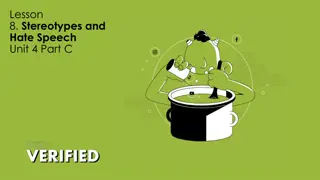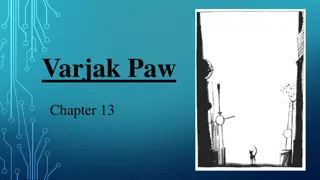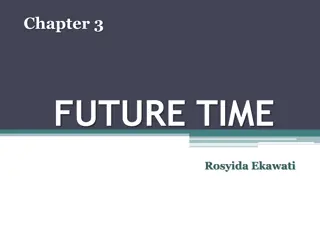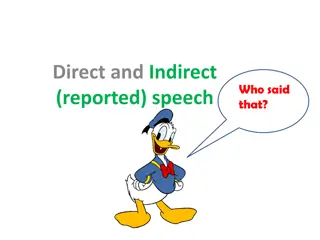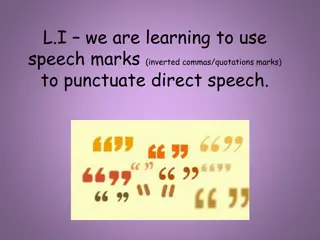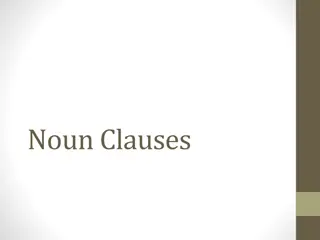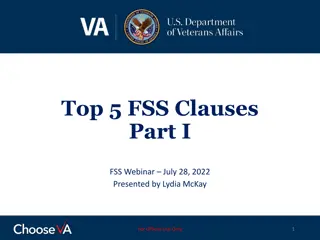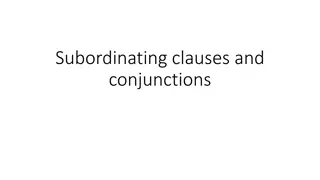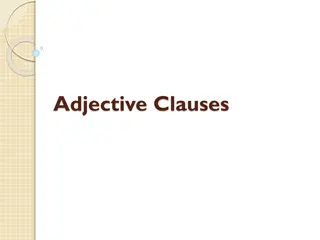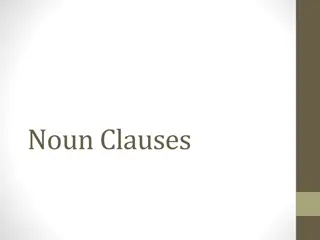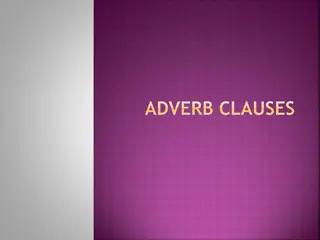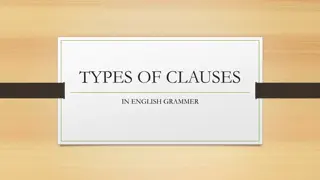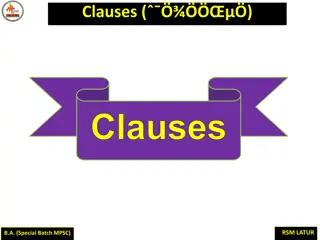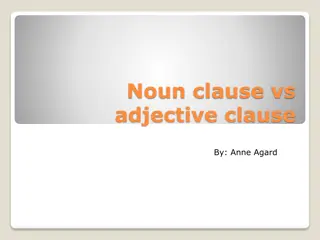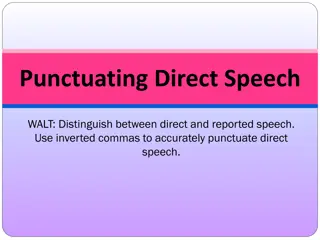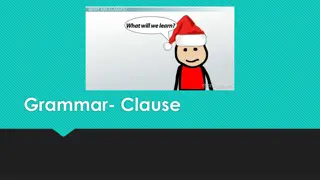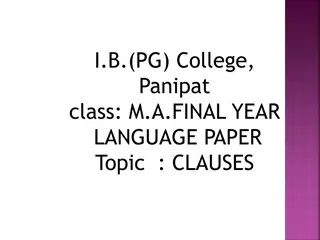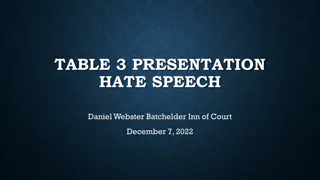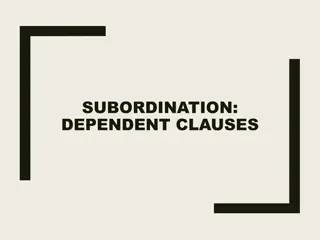Enhancing Speech Analysis Through Co-ordinated Clauses
Explore the concept of linking and contrasting statements in speeches using co-ordinated clauses, focusing on principles for effective learning and understanding of grammar through authentic texts and examples. Dive into analyzing climate change speeches by Greta Thunburg to pinpoint powerful statements for conveying messages to world leaders. Discover the significance of co-ordinating conjunctions for closely linking and contrasting ideas to evoke specific thoughts, feelings, and actions in listeners.
Download Presentation

Please find below an Image/Link to download the presentation.
The content on the website is provided AS IS for your information and personal use only. It may not be sold, licensed, or shared on other websites without obtaining consent from the author. Download presentation by click this link. If you encounter any issues during the download, it is possible that the publisher has removed the file from their server.
E N D
Presentation Transcript
Linking and contrasting statements in a speech using co-ordinated clauses
LEAD Principles PRINCIPLE LINKS EXPLANATION RATIONALE To establish a purposeful learning reason for addressing grammar, and connect grammar with meaning and rhetorical effect Make a link between the grammar being introduced and how it works in the writing being taught To avoid writing lessons becoming mini- grammar lessons, and to allow access to the structure even if the grammar concept is not fully understood To integrate reading and writing and show how real writers make language choices EXAMPLES Explain the grammar through examples, not lengthy explanations AUTHENTIC TEXTS Use authentic texts as models to link writers to the broader community of writers To promote deep metalinguistic learning about why a particular choice works, and to develop independence rather than compliance DISCUSSION Build in high-quality discussion about grammar and its effects
Noticing details in a text Authentic text Examples Discussion Read aloud these extracts from speeches about climate change made by Greta Thunburg to world leaders. What does she want her audience to think, feel or do? Which sentences do you think are the most powerful in getting across her message? Links
Noticing details in a text Examples Read aloud again these sentences, emphasising the co-ordinating conjunction, and. Authentic text You have ignored us in the past and you will ignore us again. We have run out of excuses and we are running out of time. The co-ordinating conjunction in these sentences is used to closely link the ideas in each clause. We need to get angry, and transform that anger into action. I want you to panic and act as if the house is on fire. Discussion Links Choose the sentence that you think is the most powerful in conveying the message about climate change to world leaders. Explain which two ideas are closely linked in this sentence, using and. Why does Greta link these ideas together? What does she want listeners to think, feel or do?
Noticing details in a text Which two ideas are closely linked in this sentence, using and? Why does Greta link them together? What does she want listeners to think, feel or do? Which two ideas are contrasted in this sentence, using and yet? Why does Greta contrast them? What does she want listeners to think, feel or do? The co-ordinating conjunctions in these sentences (and, yet) are used to: closely link ideas in different clauses (you could also use for, so) contrast ideas in different clauses (you could also use but, or)
Soap Box Activity: As a small group, rehearse and perform Greta s speech to the United Nations. Pay particular attention to how ideas are linked and contrasted using co-ordinating conjunctions. You can emphasise these in your speech-making, e.g. by combining voices, pausing on them, or adding gestures. See what sounds most powerful! This is all wrong. I shouldn't be up here. I should be back in school on the other side of the ocean. Yet, you all come to us young people for hope. How dare you! You have stolen my dreams and my childhood with your empty words and yet I'm one of the lucky ones. People are suffering. People are dying. Entire ecosystems are collapsing. We are in the beginning of a mass extinction and all you can talk about is money and fairytales of eternal economic growth. How dare you! You are failing us, but the young people are starting to understand your betrayal. The eyes of all future generations are upon you and if you choose to fail us, I say: We will never forgive you. We will not let you get away with this. Right here, right now is where we draw the line. The world is waking up and change is coming, whether you like it or not. From Greta Thunberg s address to the United Nations General Assembly in September 2019.
Verbalising the Grammar-Writing Link A crucial element of the LEAD principles is helping writers to think explicitly (metalinguistically) about the choices they make. As a teacher, you need to support this by being crystal clear yourself about how you verbalise the link between a grammar choice and its effect in a particular text/context. Then express this in student-friendly language, as below. Verbalisation to share with students: When you are writing an argument, or making a speech, you need to help your reader or listener understand your ideas and follow closely what you are saying. One way of doing this is by using co-ordinated clauses to closely link or to contrast ideas. (The co-ordinating conjunctions you can use include: and, for, so to link ideas; yet, but, or to contrast ideas)
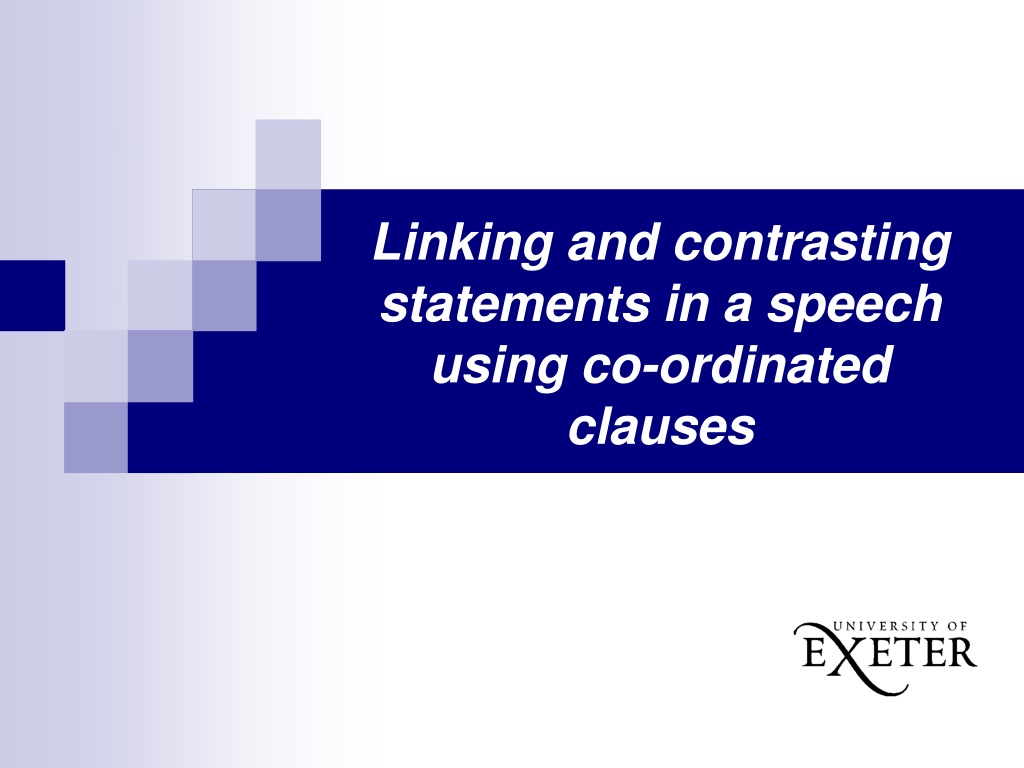
 undefined
undefined


